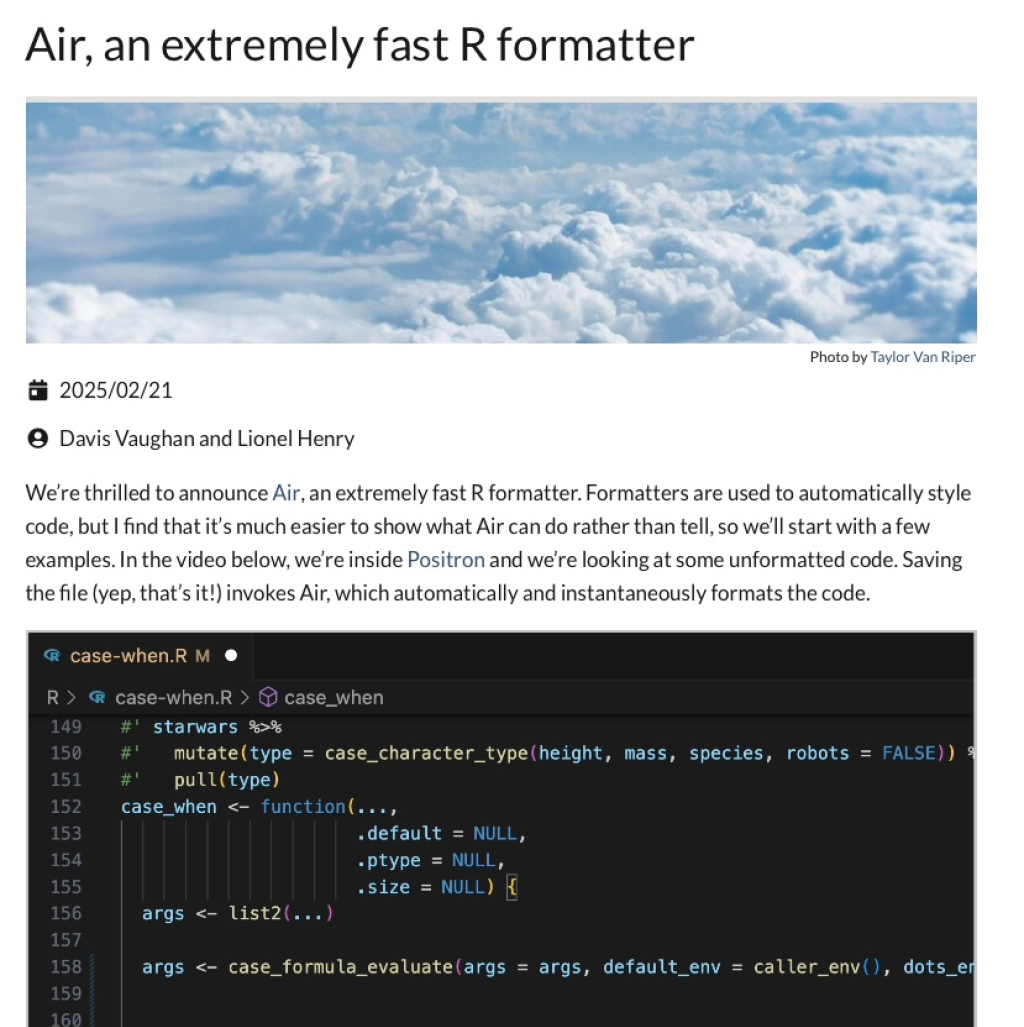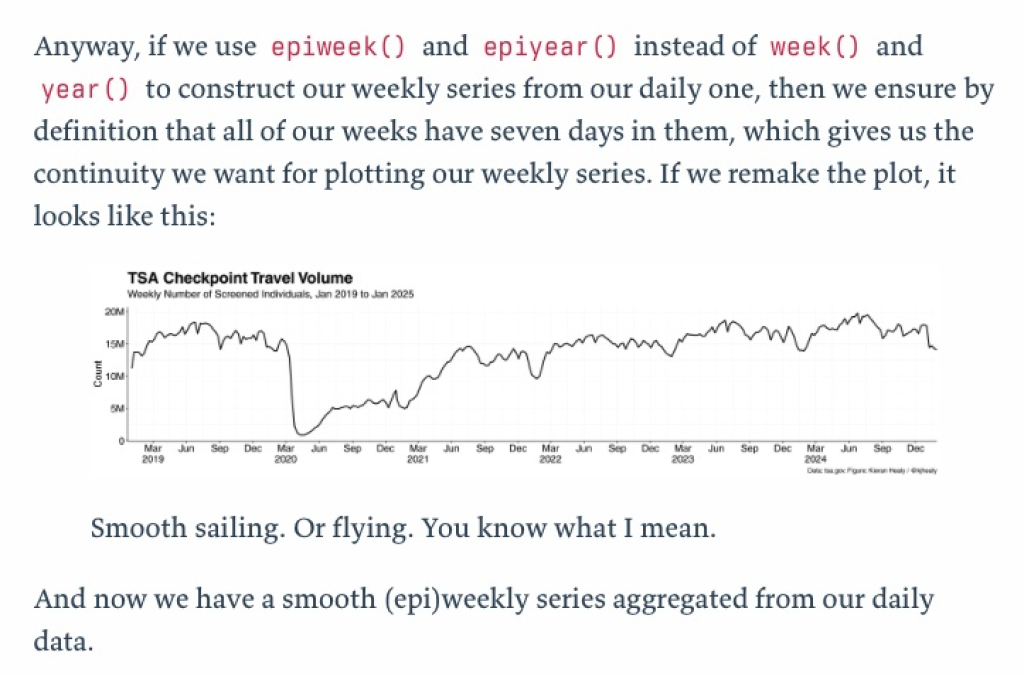What’s New in R: March 3, 2025
Welcome to this week’s edition of What’s New in R! This week, we’re featuring a new code formatter from the Tidyverse team, an analysis of TSA screening data with epidemiological weeks, and a tutorial on building RAG-based AI prototypes in R. Let’s dive in!
Air: An Extremely Fast R Formatter
The tidyverse team, led by Davis Vaughan and Lionel Henry, has announced Air, a new R code formatter that promises to be incredibly fast. Air is designed to automatically format R code consistently while maintaining readability. If you’ve ever used the {styler} package, you’ll be familiar with the value of automatically formatting code. This is another great option to do so!
TSA Screening Volume and Epiweeks
Kieran Healy provides an interesting analysis of TSA traveler screening volumes using epidemiological weeks as a visualization technique. The post showcases how to effectively visualize time series data when dealing with seasonal patterns and long-term trends. Healy’s analysis reveals that while air travel has recovered significantly since the COVID-19 pandemic, it still hasn’t quite reached pre-pandemic levels.
Rapid RAG Prototyping
Tidy Intelligence presents a comprehensive guide to building Retrieval Augmented Generation (RAG) prototypes in R. Sounds fancy, but Christoph Scheuch lays out the problem succinctly:
A common challenge with LLMs is their inability to reference specific, up-to-date information beyond their training data. This is where retrieval-augmented generation (RAG) comes into play. RAG systems bridge this gap by integrating LLMs with external knowledge bases, enabling them to generate more accurate and contextually grounded responses.
This tutorial walks through the process of creating AI-powered applications that can intelligently retrieve and process information from large document collections. The post provides practical examples and code snippets to help R users leverage modern AI capabilities in their data science workflows.
If you enjoyed this issue of What’s New In R, please share it with a friend! And if they want to get What’s New in R directly in their inbox, they can sign up on the R for the Rest of Us website.
Got any ideas for resources I should feature in future issues of What’s New in R? Leave a comment below!
Sign up for the newsletter
Get blog posts like this delivered straight to your inbox.


You need to be signed-in to comment on this post. Login.